This diagram shows the rings of Jupiter and Jupiter's innermost moons.
Click on image for full size
Image courtesy of NASA/JPL.
The Rings of Jupiter
Jupiter has a series of rings circling
it! Unlike Saturn's rings, which are
clearly visible from Earth even through small telescopes, Jupiter's rings are
very difficult to see. So difficult, in fact, that they weren't discovered
until a few years ago. Jupiter's rings were first found by the Voyager
1 spacecraft in 1979.
There are three parts to Jupiter's rings. The innermost, cloud-like
ring is called the Halo Ring. The next one out is the Main Ring, which is quite
narrow and thin. Beyond the Main Ring is the wispy, nearly transparent Gossamer
Ring. As shown in the diagram, the Gossamer Ring has two parts: the Amalthea
Gossamer Ring (closer to Jupiter) and the Thebe Gossamer Ring.
Saturn's rings are mostly made of ice. Jupiter's rings are different - they
are very dark and difficult to see. They are made up of small bits of dust.
The Galileo spacecraft helped us discover where that dust comes from. Meteors
striking the surface of Jupiter's small, inner moons kick up dust which then
goes into orbit around Jupiter, forming the rings.
You might also be interested in:
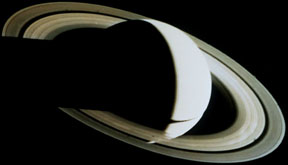
Many people like Saturn's rings. Although Saturn isn't the only planet with rings, it is the only planet famous for them. Almost every image or drawing of the planet has the rings included. But few people
...more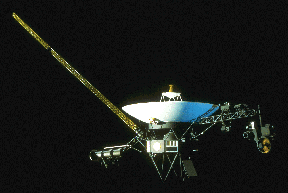
The rare arrangement of planets Jupiter, Saturn, Uranus, and Neptune in the 1980's made it possible for the Voyager spacecrafts to visit them over a 12 year span instead of the normal 30. They used gravity
...more
The Galileo spacecraft was launched on October 19, 1989. Galileo had two parts: an orbiter and a descent probe that parachuted into Jupiter's atmosphere. Galileo's main mission was to explore Jupiter and
...more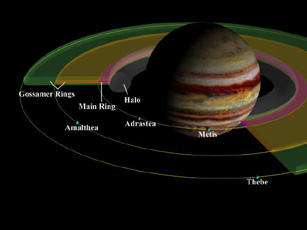
Adrastea is a small moon of Jupiter. Of Jupiter's 60 moons, it is the second closest to the planet. Adrastea was discovered by David Jewitt and Ed Danielson of the Voyager team in 1979. Adrastea is tiny
...more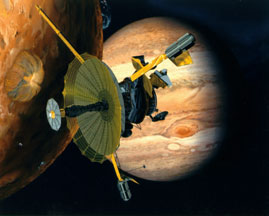
The Galileo spacecraft has finally reached the end of its road. Galileo has been orbiting Jupiter since 1995. On September 21, 2003, Galileo will dive into Jupiter's atmosphere and burn up. This crash
...more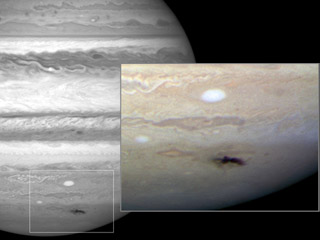
Anthony Wesley is an amateur astronomer in Australia. On the night of July 19, 2009, Wesley noticed a dark spot on Jupiter that hadn't been there before. He had discovered the remains of a huge impact
...more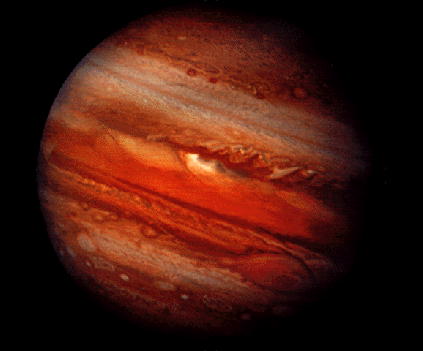
Jupiter is the largest planet in our solar system. It is also one of the brighter objects in the night sky. No one knows for sure who discovered Jupiter, but we know the ancient Greeks named him after
...more














